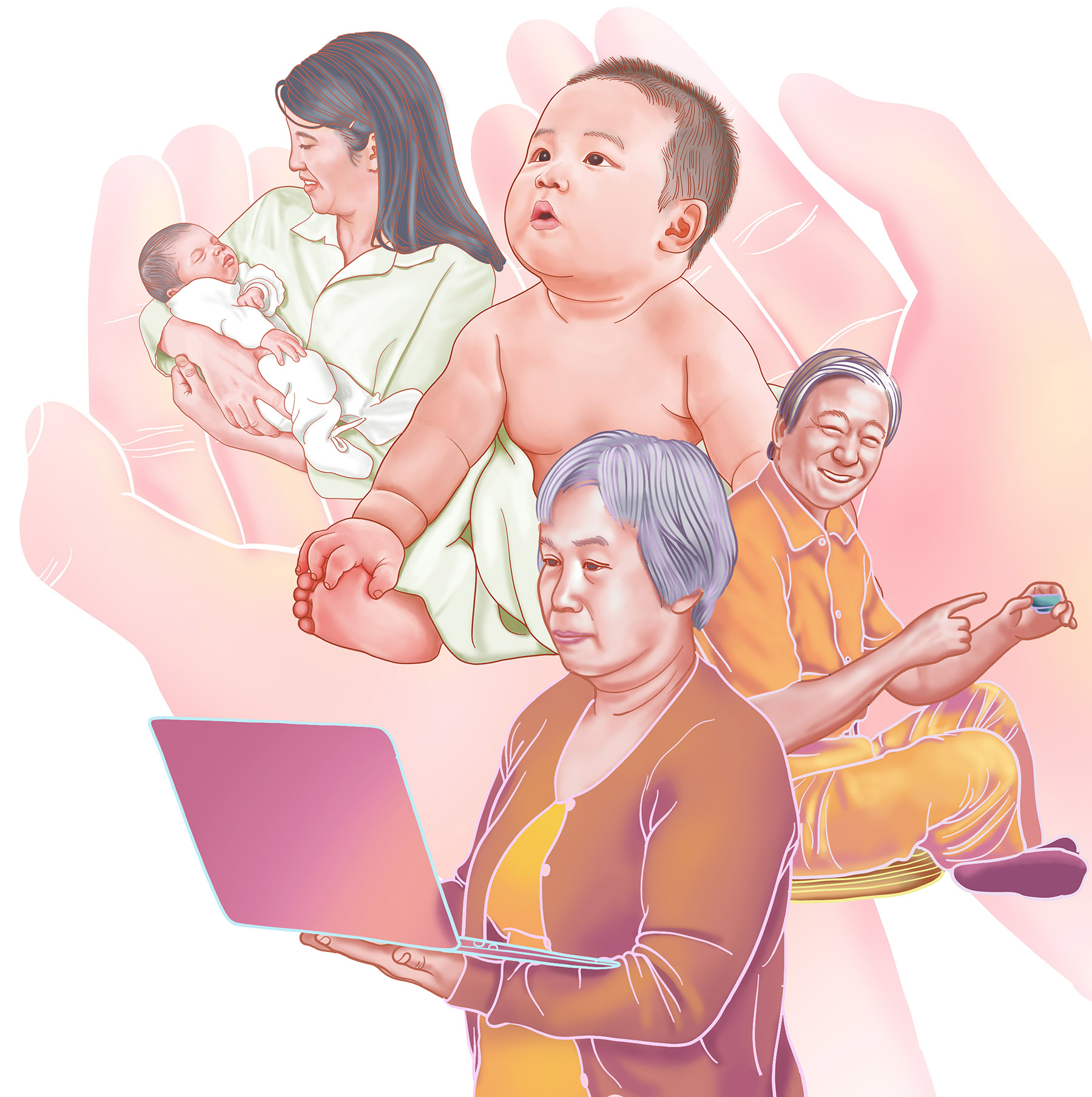
The development experiences of different countries at different times show that the relationship between population development and socioeconomic development can be mutually reinforcing and mutually constraining. Since the launch of reform and opening-up in 1978, China has benefited from a favorable demographic structure characterized by an increasing workforce, declining dependency ratios, and rising education levels of young workers, which contributed to China's rapid economic growth.
However, population dividends cannot be permanent growth factors. Since traditional growth drivers weaken at higher development stages, economic growth is bound to decline. The experiences of advanced economies prove this fact: economies transitioning from upper-middle-income to high-income status often experience growth slowdowns when their per capita GDP reaches about $13,000. From 2009 to 2019, upper-middle-income economies with late-stage population dividends saw, on average, 5.4 percent GDP growth, while high-income economies with post-population dividends averaged only 2.1 percent. However, economies with appropriate policy responses can extend the population dividends and achieve smoother growth decline.
READ MORE: Population drop last year likely more than 2022
China's demographic transition, characterized by people getting old before becoming rich, creates challenges and opportunities. Adapting to the new demographic normal while transforming development modes and fostering new growth drivers still offers China development opportunities. By optimizing and upgrading the industrial structure, intensifying urbanization, and vitalizing rural areas, China can ensure long-term economic growth within a reasonable range.
Besides, to realize Chinese modernization, the country has to first address the new demographic challenges and achieve high-quality population development. Based on China's modernization goals and demographic challenges, the essence and significance of high-quality population development can be summarized as follows:
Moderate fertility levels and stable population size: China's total fertility rate has declined to about 1, far below the world average of 2.3. If this low fertility rate persists or declines further, it will accelerate population decline and aging. Although a decline in the fertility rate is linked to socioeconomic development, China's strict family planning policy in the past, too, contributed to the suppressed fertility levels. So, improving basic public services and reducing the costs of childbirth, childcare, and children's education can help reverse the fertility rate to a more sustainable level.
Optimized regional population distribution and dynamic balance: Regional population disparities reflect the difference in the development levels of different regions. Coastal areas, with low fertility rates but strong economic growth, attract more workforce, resulting in net population inflows. Conversely, some central and western provinces with higher fertility growth rates but relatively low economic growth rates see the exodus of the workforce, while the northeastern region faces low birth rates and high labor outflows. Reversing these trends, even slightly, requires coordinated economic and population policies.
Modern human resources for technological advancement: Beyond the abundant workforce, favorable demographic conditions include continuous entry of better-educated young workers into the labor market and rising human capital. The decline in population growth and rapid increase in the aging population create hurdles for human capital accumulation due to slower improvement in labor quality, older workers with relatively low education levels struggling to adapt to the industrial and technological changes, and structural employment difficulties, complicated further by the rapid development of artificial intelligence technology.
Hence, improving both the quantity and quality of labor is crucial to achieving high-quality population development.
Improving people's living standards for common prosperity: High-quality population development will promote Chinese modernization by aligning the goals and means of modernization. Maximizing population and talent dividends is essential to ensure sustained economic growth. Measures promoting a family-friendly society are conducive to improving basic public services, creating high-quality jobs, boosting human capital and fostering social mobility and individual development.
Moreover, adapting to new demographic trends requires a better understanding of the new economic situation and the need to take targeted policy measures.
ALSO READ: Human capital dividend to propel modernization
Enhancing fertility rates across life cycles: UN surveys show the desired fertility rate globally is the replacement level fertility of 2.1. Favorable public policies can help raise the fertility rate above the current level in China, as most Chinese couples are reluctant to have two (let alone three) children because the more children they have, the more difficult it would become for them to balance career and family.
Unlocking population and talent dividends: While China's working-age population may not increase in the near future, transferring surplus agricultural laborers and low-productivity non-agricultural laborers to other sectors can increase the supply of non-agricultural laborers. Reforms such as relaxing the household registration restrictions in urban areas can facilitate workers' mobility and resource reallocation, creating tangible reform dividends.
Synchronizing population quality and people's living standards: The alignment of high-quality population development and the improvement in people's living standards are significant in terms of policy. The Human Development Index (HDI), which covers per capita GDP, education, and healthcare, aligns with high-quality population development. So, policies to improve the HDI can encourage some couples to have more than one child, as seen in welfare states such as Sweden. When it comes to achieving Chinese modernization, policies to help maintain moderate fertility rates can be integrated with the strategy to build a comprehensive social welfare system.
By adapting to the new demographic trends, China can better promote high-quality population development to achieve sustained economic growth and Chinese modernization, ensuring long-term prosperity and shared development benefits.
The author is a chief expert of the National High-end Think Tank, a division under the Chinese Academy of Social Sciences.
The views don't necessarily reflect those of China Daily.


